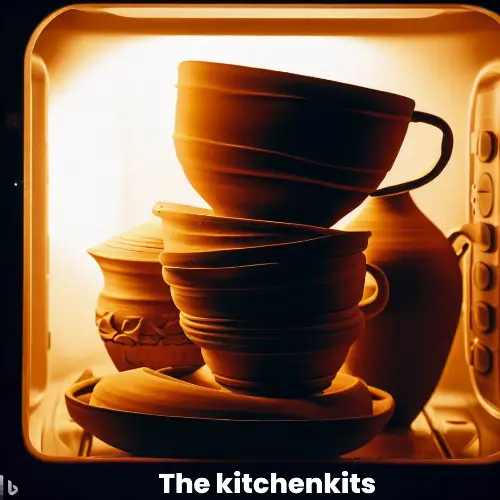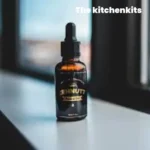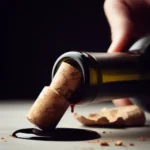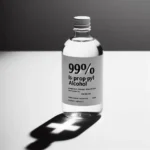Table of Contents
Why Do Some Clay Dishes Get Hot In The Microwave
Microwaves provide a quick and convenient way to heat leftovers or prepare meals in minutes. But you may have noticed that some plates, mugs, and bowls get extremely hot after microwaving while others stay cool. Choosing the proper microwave-safe dishware is crucial to avoid cracking your ceramics or burning yourself when taking them out of the microwave oven.
This article will explain why certain materials like ceramics and stoneware get dangerously hot in the microwave while materials like Glass and plastic do not. We’ll also give tips on identifying dishes that could be problematic and provide a guide to selecting microwave-safe plates, bowls, and mugs for safe microwave use.
The Risks of Heating Unsafe Dishes
Using your microwave to reheat leftovers or quickly prepare oatmeal in the morning is a daily ritual in many households. But accidentally microwaving a mug or plate made of material that absorbs microwave energy can lead to intense heat and serious risks:
Ceramic plates may develop small cracks or crazing from rapid heating
Stoneware mugs can get hot enough to burn skin
Metallic paints or components can cause sparks and fires
Understanding why some dinnerware absorbs microwave energy and choosing microwave-safe dishes will prevent safety hazards and damage.
Why Do Some Dishes Get So Hot?
Microwave ovens rapidly oscillate electromagnetic waves, causing water molecules in food to vibrate and build up frictional heat. But some plates and mugs efficiently absorb and conduct this microwave energy, rapidly becoming hot themselves.
Materials to Avoid in Microwaves
Ceramics, stoneware, porcelain, and earthenware contain mineral compounds and heavy metals that readily absorb microwave frequencies, leading to intense heat. Metallic glazes or paints containing iron can also cause issues.
The Science of Microwave Heating
A material’s tendency to absorb microwave energy and become hot is determined by its dielectric properties. Ceramics and stoneware have high dielectric constants, allowing microwave waves to penetrate quickly and be converted to heat. Materials like Glass and plastic have low dielectric properties, reflecting microwaves instead of readily absorbing them.
Signs Your Dishes Aren’t Microwave-Safe
Should a plate or mug be used to microwave food? Here are some warning signs it’s not microwave-safe:
The dish feels hot after microwaving, even if the food is cool
Small cracks or crazing develop after repeated microwave use
It contains metallic paints, glazes, or accent colors
Choosing the Right Dinnerware for the Microwave
To avoid hot plates and unsafe conditions, always look for dishes labeled “microwave-safe.” But not all “safe” dinnerware is marked correctly. Some materials known to be generally microwave-compatible include:
Glassware and mugs (especially borosilicate glass)
Ceramic dinnerware labeled as “microwave-safe”
Plastic containers marked “microwave-safe”
Paper plates, towels, and microwave-safe wraps
Thick Glass and ceramic plates may work for brief warming, but it’s safest to use specialized microwave-safe dishware for extended reheating and cooking. Never put metal of any kind in the microwave.
Critical Tips for Safe Microwave Use
To avoid burning yourself or damaging dishes, keep these microwave safety tips in mind:
Don’t use traditional stoneware, ceramics, or porcelain unless labeled “microwave-safe.”
Choose Glass, plastic, and paper products that are “microwave-safe.”
Avoid dishes with metallic paints, glazes, or components
Use potholders – even “safe” plates get hot from the heated food
Stop microwaving if you see sparks or excessive heat
With proper microwave-safe dishware and sensible precautions, your microwave can be a safe, convenient way to cook.
Microwave-Safe Materials (In-Depth)
Now, let’s take a more in-depth look at the common dishware materials, exploring why some are prone to getting hot and others are microwave-compatible.
Glassware
Glass plates and mugs typically don’t absorb much microwave energy, making them safer. Borosilicate glass products are explicitly designed to withstand rapid heating. Avoid fragile glassware, which may crack or shatter when heated.
Ceramics
Traditional ceramic dishes, bowls, and mugs frequently get dangerously hot in the microwave because their clay contains minerals with heavy metals that readily absorb microwave energy. Newer microwave-safe ceramics are formulated without these problematic compounds. Refrain from using antique or handmade ceramics.
Stoneware
Like ceramic, traditional stoneware contains compounds like iron that cause it to absorb microwaves, making it extremely hot efficiently. Unless labeled “microwave-safe,” avoid microwaving stoneware.
Porcelain
Porcelain dishware, especially older porcelain, can get hot in the microwave despite being non-metallic. The mineral compounds interact with microwave energy. Use caution unless the item states “microwave-safe.”
Plastics
Plastic containers are only microwave-safe if labeled as such. The plastic must be formulated to withstand microwave heating without leaching chemicals. Avoid putting plastic bags, wraps, or polystyrene foam in the microwave.
Earthenware
Unglazed terra cotta earthenware, like ceramic baking dishes, quickly absorbs microwave energy and gets dangerously hot. Avoid microwaving these, even for short durations, unless explicitly labeled as microwave-safe.
Metal & Metallic Decorations
Never put metal objects like aluminum foil, cutlery, twist ties, or dishes with metallic paints or bands in the microwave. The interaction with microwave energy creates sparks and intense heat. Remove all metal before cooking.
Microwave Heating Science
Let’s delve into the science behind why some materials get blazing hot in the microwave while others stay cool:
Dielectric Properties
A material’s dielectric constant determines how readily it interacts with electric fields like microwave radiation. Ceramics and stoneware have high dielectric constants, absorbing energy and converting it to rapid heat. Glass and paper have lower dielectric properties, reflecting microwaves.
Molecular Structure
Materials containing abundant free water molecules and mineral salts with heavy metals, like ceramics, vibrate readily as microwaves cause polarity shifts. This builds up intense heat very quickly. Plastics lack these compounds and molecular structures.
Metallic Inclusions
Small amounts of metallic paints or glazes dramatically increase heating because the interacting electrons rapidly vibrate, releasing significant thermal energy. That’s why metallic decorations cause issues.
What If Your Dish Gets Hot Anyway?
Sometimes, even microwave-safe labeled ceramics will get hotter than expected during extended cooking. What causes this?
Older dishes marketed as “microwave-safe” had less stringent testing. Err on the side of caution.
Long cooking times allow heat transfer from the hot food to the plate. Use intermittent power.
Imperfections in the material, like tiny metallic specks, may absorb waves. Try Glass instead.
If you accidentally microwave a ceramic mug and find it’s hot, stop reheating it. Use oven mitts when removing hot dishes, and allow them to fully cool before touching them barehanded. Never microwave containers with cracks or crazing.
FAQs
Why do some clay dishes get hot in the microwave?
Some clay dishes, such as stoneware or ceramics, can get hot in the microwave because clay is a good conductor of heat. When placed in the microwave, the microwaves penetrate the clay and excite the water molecules, producing heat. This heat is transferred to the clay dish, causing it to become hot.
Are all clay dishes hot in the microwave?
No, not all clay dishes get hot in the microwave. Some manufacturers produce clay dishes, like porcelain, specifically designed to be microwave-safe. These dishes are formulated with materials that do not absorb microwave energy, so they do not get hot when used in the microwave.
How can I tell if a dish is microwave-safe?
Check the manufacturer’s label or instructions to determine if a dish is microwave-safe. Look for phrases like “microwave safe” or “safe for use in the microwave.” Additionally, some words may have a symbol depicting a microwave to indicate that they can be used in the microwave without any issues.
Can I use any dish in the microwave?
It is recommended to use only some dishes in the microwave. While ceramic and stoneware plates can handle the heat, other types of words, like those made of Glass or plastic, may not be safe for use in the microwave. Always check the manufacturer’s instructions to ensure a dish is safe for microwave use.
Why do clay dishes become too hot in the microwave?
Clay dishes can become too hot in the microwave due to their ability to absorb and retain heat. The heat generated by microwaves can accumulate in the clay, especially if the dish is thick or has a dense structure. This can cause the container to reach high temperatures that can be dangerous to handle.
What should I do if my dishes and plates get too hot in the microwave?
If your dishes and plates become too hot to handle in the microwave, it’s best to use oven mitts or a towel to protect your hands. Alternatively, let the dish cool down for a few minutes before removing it from the microwave. It’s essential to exercise caution to prevent burns or injuries.
Are Corelle dishes microwave-safe?
Yes, Corelle dishes are generally considered microwave-safe. Corelle is a type of glassware designed to be lightweight, durable, and heat-resistant. However, it’s always a good idea to check the specific instructions provided by the manufacturer to ensure the dishes are safe for microwave use.
Can I heat any dish in the microwave?
While many dishes can be safely used in the microwave, it is essential to check the labeling or instructions to ensure they are microwave-safe. Some kitchen ceramics and stoneware may contain materials that can cause them to get hot in the microwave, potentially leading to cracking or other damage.
Is it safe to use dishes and plates in the microwave?
Yes, microwaving dishes and plates is generally safe if labeled microwave-safe. However, it’s essential to follow the manufacturer’s instructions and avoid using cracked, chipped, or damaged dishes, as they may release harmful substances or break during heating.
How can I prevent dishes from becoming too hot in the microwave?
You can use a microwave-safe cover or lid while heating food to prevent dishes from becoming too hot. This can help to distribute the heat more evenly and prevent the plate from overheating. Using lower power settings or shorter heating times can also help control the heat buildup and prevent excessive heating.
Specialized Microwave-Safe Dinnerware
Rather than worrying about risky dishes, consider investing in specialized microwave-safe dinnerware such as:
- Corelle LivingwareTM ceramic plates and bowls
- Pyrex glass bakeware and containers
- Snapware Glass and plastic containers -Anchor Hocking microwave-safe glass mugs
Buying specifically microwave-tested dishes means peace of mind while reheating. Designs made from Glass, silicone, and plastic provide a much lower risk of overheating issues.
Conclusion: Key Tips for Safe Microwaving
Microwaves provide fast, convenient cooking, but caution is needed to prevent burns or damage from overheated dishes. To use your microwave safely:
- Use only microwave-tested Glass, plastic, and paper containers
- Never microwave traditional ceramic, stoneware, or porcelain
- Don’t use words with cracks, crazing, or metallic decorations
- Allow microwaved dishes to fully cool before handling
- Stop if you see intense heat or sparking
Taking proper precautions allows you to enjoy quick microwaved meals without worrying about dangerously hot plates. Investing in dishes designed for the microwave oven is the safest choice for convenient cooking.

I’m Ian Welkins, a seasoned professional in the kitchen industry. My passion now drives me to provide invaluable insights into the world of top-notch kitchen products. With years of hands-on experience, I’m your go-to source for culinary excellence.











